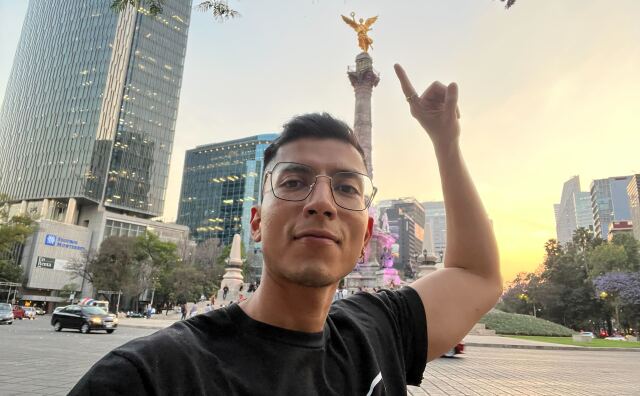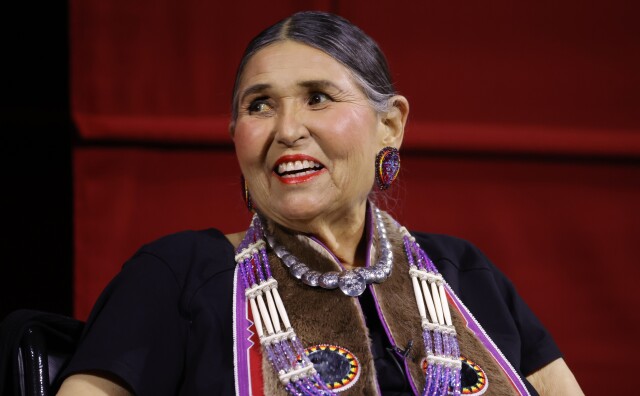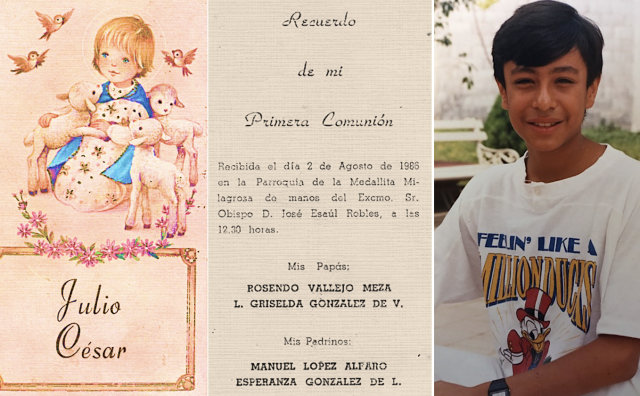"Mr. Lopez, we need you to turn in the form declaring your son's race," said the administrator from my son's school.
In second grade, we transferred him to LAUSD from his parochial school and filed the necessary stack of paperwork, save one form. That was the statement of racial identity.
-
From June 2020 to July 2021, we published your stories each week to continue important conversations about race/ethnicity, identity and how both affect our lived experiences. We now have a new series Being American, which is again soliciting your essays.
-
Read:
It wasn't intentional, just an honest mistake. But it wasn't one the school would easily overlook. They called my wife and me individually to obtain the form.
Completing this form was not easy. My son is multiracial -- Black, white and Native American. I too am multiracial white and Latino. My wife and I are Mexican American.
From a biological standpoint, the answer for our son's identity would be different from ours because he is not ours biologically. But then again, that doesn't really matter, because race is a social construct. So, from an ethnic standpoint, he's being raised with some of the cultural norms of a Southern California Mexican American family.
The first question the LAUSD form asked is if our son is Latino or non-Latino.
Then the next question we encountered asked for his "primary" and "secondary" race.
No explanation was given for the meaning or significance of those terms. Then, probably the strangest of all instructions was that if Latino is selected in the prior question, then only a "secondary" race may be selected in the latter. In other words, Latino is essentially treated as a race in a question of its very own, and it carries primacy over all other identities. Which makes me wonder: In multiracial Los Angeles, Latinos number nearly three-quarters of the LAUSD student population. But what would that number be if mixed Latinos were counted?
I couldn't help but think that this shouldn't be so hard.

Kids like my son are not particularly unique in Los Angeles, nor is multiracial identity particularly new. As a multiracial person myself, I have been dealing with these issues my whole life.
Two families, two cultures
Growing up in the suburbs of Los Angeles, the white side of my family lived closest, mostly in Orange County. They were transplants from Milwaukee, Wisconsin -- great-aunts and uncles who were older than my parents, and their children, who were my second cousins. Since my parents married late in life, my siblings and I were the babies of the family. Our get-togethers were pleasant but generally quiet affairs.
My Mexican family, on the other hand, was a different story. First, they were younger and larger in number. I literally had dozens of cousins. Second, they lived farther away, and we would do a yearly three-day trek through the Sonoran Desert to visit them in El Paso, Texas.

As I like to say, someone was always either getting married or buried. Usually this was during our summer break from school, so you can imagine how brutal the heat was on those vacations. This experience, combined with my exposure to Mexican characters in old westerns, led me to believe for a time that Mexicans really like hot places for some reason.
My parents never explicitly taught us culture. They were more about the "soft sell." It oozed into our lives through osmosis.
Our home was chosen among the different tract home models in our neighborhood because it specifically had a slight "Mission style" design. Our home décor was a mishmash of Spanish and Mexican motifs. Bedtime wasn't "beddy-bye," it was "mimis' time."
I don't know how I knew it, but I knew that somehow I was a mixture of very different groups of people. I still remember having trouble as a child in elementary school filling out the forms on "proficiency tests." I recall sitting in a circle with my friends declaring what we "were," such as Chinese, Filipino, Japanese -- and I said half white and half Mexican. I didn't really appreciate what any of this meant in my life until I went to college.
I received a National Hispanic Scholars award, thanks to my high PSAT scores. Was I a valid recipient? When I was admitted to UC Berkeley in 1990, I didn't know if it was by affirmative action, although I did receive an "affirmative action" grant. It was a one-time grant for a few hundred bucks. I think it paid for one semester of books.
More from our Race In LA series
- 'White' Without The Privilege: An Arab American's Quest To Be Counted
- From 'Go Back To Your Country' To A Vice President-Elect Who Shares My Grandmother's Name
- My Mom Was A Black Entrepreneur. I Never Thought About It, Until Now
- How An Outsider Found Identity, Belonging In The Intangible Shared Spaces Of A Redlined City
- Perspectives on Artsakh from a Black Armenian Angeleno
- Our Heroes Got Us Into This Mess. We Have To Get Ourselves Out
- Surviving The Endless Waves: When American Dreams Aren't All They're Cracked Up to Be
- How A 'Secret Asian Man' Embraced Anti-Racism
- On Race, School, The Teacher Who Tried To Decide My Fate And Those Who Let Me Decide It Myself
- How To Participate In Our Series
Affirmative action was stripped away by Proposition 209 in 1996 and this was recently reaffirmed with the failure of Proposition 16. I guess such generosity is no longer in style.
I studied engineering at Cal and, if I wanted, I could have buried my nose in a textbook or glued my eyes to a computer screen. But a significant part of my choice in schools was the radical reputation of the school and city.
I joined a student group focused on recruiting and retaining Latino students. One of my activities was visiting local area high schools to encourage applications to the UC. While there was never any shunning of me in the group, I couldn't help noticing that my experience as a Latino was very different from the others, and I believe it was because of my mixed upbringing.
But then I got lucky.
Embracing both sides
A student group had just formed on campus focused on mixed race students, and I started attending meetings. Among these students, I learned new ways of thinking and understanding race that echoed my own experience. It is very seductive finally finding one's "tribe" and, like becoming addicted to a drug, I was hooked.
And what better place for this to happen than Berkeley? One of the oldest nonprofit groups to support mixed race people, I-Pride, originated there. The first national umbrella organization, Association of MultiEthnic Americans (AMEA), had just formed, headquartered in Berkeley.

The first and longest-running course on multiracial people at the time was offered on campus. And while I didn't know this then, the student group I joined was probably the first of its kind in the nation.
I would eventually come to lead the student group and even join the board of directors of I-Pride my senior year. I was very fortunate to be in the right place at the right time, with the right inclination to be a part of something.
Through my activism with these groups, I learned of a sister group known as Multiracial Americans of Southern California, or MASC. Meeting since 1986, they were among the charter members of AMEA and presented an annual conference that drew attendees from all over the country.
Like many college students do today, when I graduated, my first stop was to go back home. I was broke but I had a degree. And while it took me a while to find my first job during the recession of the early 1990s, I didn't waste any time getting involved with MASC.
Our focus at the time, along with other like-minded groups across the country, was to change federal standards to allow multiracial people to check off multiple races on various forms, rather than being forced to mark only one.
Forcing someone who is multiracial or multiethnic to choose only one race or ethnicity on a form, when they identify with more than one, is an impossible choice. Imagine being in this position and asking yourself, which race is "primary" in your life?
It is like asking a child which of their parents they love more.
Trekking through the desert for three days to El Paso taught me there was something special about these people we were visiting. I was referred to as "mijo" almost as often as by my name. While I didn't see the Mexican side of my family often, they were still a part of me, just as much as the other side of the family I saw throughout the year.
The full story of how the change in federal standards came about is long and better told elsewhere, but we were successful in 1997 when the Office of Management and Budget made it happen: For the first time in U.S. history, people could mark one or more races not only on the census form, but on any form where the data is reported to the federal government, which translates to almost all forms.
Yet while we claimed a victory at the time, it was really only a half-measure, because it only pertained to the race question.
Recall the form we had to fill out for my son from LAUSD? Latino is not considered a race on census and other federal forms, and is asked as a separate question. The update to statistical directives in 1997 didn't apply to Latinos. Thus, the federal government, and consequently all lower levels of government, don't acknowledge mixed Latino (someone who is part Latino, part non-Latino) identity.
Put another way: people like me don't count.
Why I call myself 'LOMA'
To this day, you will find no official data on persons like me of mixed Latino and non-Latino identity. I've coined the term "LOMA" for Latinx of Mixed Ancestry to describe this community. Some studies suggest that as many as a quarter of Latino-identified people in this country could actually identify as LOMA if given the chance.
Why does this matter? Let me give an example: A few months ago, the University of California revealed that for the first time, Latinos make up a plurality of students admitted to UC campuses this year, making up 36 percent of admitted freshmen.

Given that Latinos have been a plurality of Californians in general for a few years already, to finally be a plurality of admitted students feels like justice at last.
But studies have suggested that the number one reason someone with Latino ancestry would not identify as Latino is because they have mixed ancestry.
Some would say this is a sign of assimilation. I would argue this has less to do with assimilation and more to do with being forced to choose only one ethnicity.
If "LOMAs" could mark multiple ethnicities, then perhaps the reported number of Latinos entering the UC system would be higher, both today and in the past. Persons marking "Latino" are not likely to stop there if given the option for multiple choice. Allowing LOMA identification could give us a clearer picture of the Latino population, and most likely increase it.
So, I continue to struggle with this. My children continue to struggle with this. And by my estimate, given the size of the Latino population, millions of people of LOMA heritage continue to struggle to be counted properly in this country. But perhaps there is some light on the horizon.
In 2015, California passed Assembly Bill AB 532, which mandated that when collecting and reporting demographic data, multiple selections must be permitted not only with racial data, but ethnic data as well. In other words, whether you consider Latino to be a race or an ethnicity, mixed-heritage Latinos must be counted. There is a grace period to implementation, but all state agencies must be in compliance with updated forms and procedures by January 1, 2022. Will California be ready?
MASC conducted a study in the fall of 2019 of how major state and local agencies count multiracial people and published its findings earlier this year. The report, titled "Half Measures" (also found at mixedracestudies.org), concluded that no state or local agency we examined was yet fully compliant with the new state law, mainly due to lack of means to count Latinos of mixed ancestry. The state law has also put California on a collision course with federal standards, which don't allow for the counting of these mixed-identity Latinos, so there's still a question of if and how state and federal standards can be reconciled.
What could a clearer picture of the mixed Latino population mean for politics? Much has been made in the news lately of the number of Latinos who voted for outgoing President Trump. To be clear, a significant majority of Latinos did not support him. But I have given responses to pollsters, and I know they don't ask about mixed Latino identity. As I've described above, since no one can really say who is Latino without considering mixed identity, it's not as easy to gauge Latino support for a candidate as it may seem.
I am Latino. I am also white. I am a product of the University of California system and a lifelong resident of the state.
I have learned to be proud of California's progressive goals, but also a bit skeptical of its ability to achieve them. If California's agencies achieve the mandate of counting people like me, Latinx of mixed ancestry, then they will be the first in the nation to do so. And as California has demonstrated time and again, how it goes, the nation eventually follows.

For readers still wanting to know how I dealt with the LAUSD form, I finally got around to calling the school back, and provided them with what racial and ethnic identity I thought they should put on the forms for my son.
I had to laugh when they said my wife had already called -- and she gave them a different answer!
In the interest of maintaining domestic tranquility, I told them to keep whatever she told them.
About the author
Thomas Lopez grew up in the L.A. area and works as a mechanical engineer in the medical device industry. He is a board member of Multiracial Americans of Southern California (MASC) and is the founder of MASC's Latinx of Mixed Ancestry (LOMA) program, and an administrator of the Mixed Race Studies Facebook group. The political opinions expressed in this essay are solely those of the author, and not of MASC.








